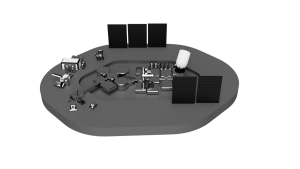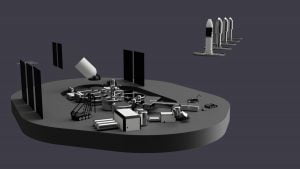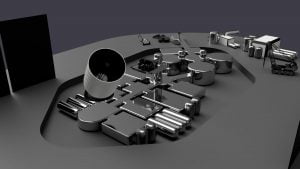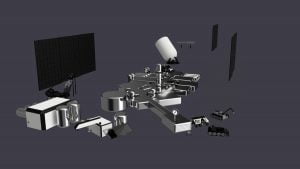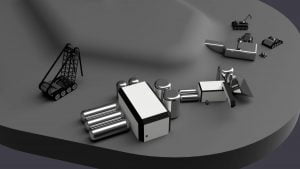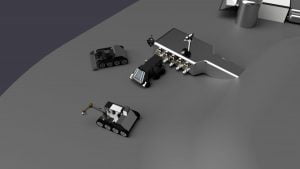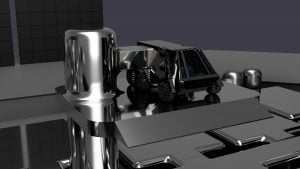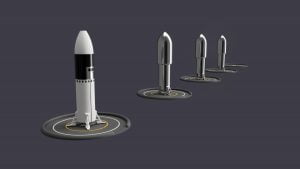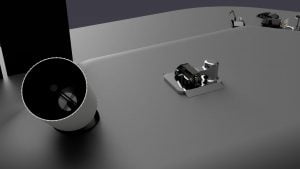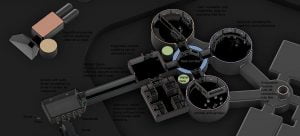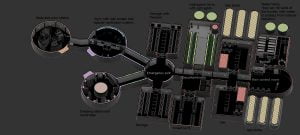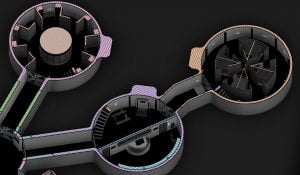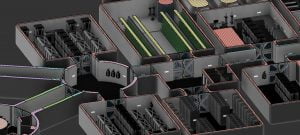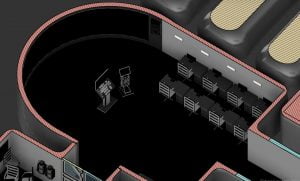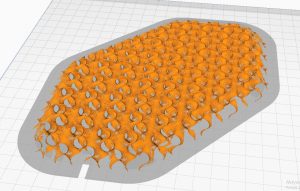Moon Camp Pioneers Gallery 2020-2021
In Moon Camp Pioneers each team’s mission is to 3D design a complete Moon Camp using Fusion 360. They also have to explain how they will use local resources, protect astronauts from the dangerous of space and describe the living and working facilities.
Team: Stardust Engineers
Akademickie Liceum Ogólnokształcące Politechniki Śląskiej Gliwice Poland 16, 17, 18
External viewer for 3d project
|
Project description
The result of many months of work is our idea of what the first station on the moon could look like. The base was designed with 16 crew members on board. Our modular lunar camp consists of two levels which include: a kitchen, a recreation room with an on-board computer, a decontamination area, a gym, crew cabins, a tool workshop, a laboratory, a toilet with a shower specially designed for the conditions of the moon, a hydroponic farm with LED lights adapted to chlorophyll and photosynthesis, a storage, a bunker, a closet with clothing for the crew, a control center and a station for producing oxygen by electrolysis. Additionally, the base also includes: life support systems, air and water treatment systems, ventilation, heating and, if necessary, active water protection against radiation caused by solar explosions. When designing the lunar base, we used an innovative method of putting on suits. How does it work? The suits are located outside, connected by hatches to the base and the rover. Astronauts can easily go out for EVA moonwalks without the need for decompression. |
|||
|
Where do you want to build your Moon Camp?
We will set up our base at the craters near the north pole of the Moon. We chose this location because there is a huge accumulation of ice. We will use water ice that can be found on the moon to supply the needs of the astronauts and other features of our base, for example, 3D printing with lunar create. North pole receives different levels of sunlight light depending on where you are. There are regions on which are almost always illuminated (Peaks of Eternal Light), they are the hills and edges of the craters, on which we can put up solar panels. but just as there are always illuminated regions there are regions that are not illuminated by the sun. These regions are called Permanent Shadow Regions (PSR) and this is the area that contains the massive amounts of water ice. How do you plan to build your Moon Camp? Describe the techniques and materials you would use.
Our lunar base was designed with a modular system. We plan to build the lunar base on the ground with stainless steel and aluminum. When it is ready and properly tested, it will be divided into individual components and loaded aboard Starship spacecraft. Once they reach the surface of the moon. they will be unloaded using rovers and machines specially designed for this purpose. When the base is well seated, it will be covered with layers of regolith using rovers that will 3D print a frame on which the Lunar Crete (cement from regolith) will be deposited. The environment on the Moon is very dangerous for the astronauts. Explain how your Moon Camp will protect them.
The problems that astronauts may encounter on the moon are: cosmic radiation, the possibility of a meteorite impact, low temperature and solar flares. We decided to protect our moon camp first of all with a thick top layer of regolith, in this way we can minimize the effects of cosmic radiation and increase resistance to meteorites. We plan to maintain a constant positive temperature inside the base by heating and insulation. Evacuation plan: Explain how your Moon Camp will provide the astronauts with:
|
|||
|
Water
|
Food
|
Electricity
|
Air
|
|
Water will be transported to the lunar base aboard spacecraft, and a water recycling system will operate inside the base. Water will be recovered from sweat, urine and exhaled air that would condense on the walls of the moon camp. |
The food will be delivered to the lunar base from Earth in the form of freeze-dried products (Freeze-drying is the process of cooling food and then depriving it of water under low pressure). In the first delivery, cockroaches, crickets and mealworms will be delivered to the base to create an insect farm to provide the astronauts with protein-rich food. After one month, the astronauts will also be able to enjoy food grown on the moon in an electric hydroponic greenhouse. |
After landing crew members will set up solar panels and RTG (radioisotope thermoelectric generator) an electricity generator in which the energy source is the decay of a radioactive isotope, and the heat released in this way is converted into electricity. Obtained energy will be stored in batteries to ensure a constant flow of electricity. Furthermore, the gym equipment will generate electricity while performing physical exercises. |
We plan to use a process developed by ESA to extract oxygen from lunar dust, based on molten salt electrolysis. It is an electrochemical process, in which the molten electrolyte is chemically transformed by the flow of electric current on the electrodes. It works as follows. The lunar soil is mixed with molten calcium chloride at 950 degrees Celsius. When an electric charge is applied, oxygen is extracted from the regolith and it migrates towards the anode where it is collected. The process efficiency reaches 96% after approx. 50 hours. |
|
Explain what would be the main purpose of your Moon Camp (for example: commercial, scientific, and/or tourist purposes).
Moon camp development is the first such a large undertaking since the creation of the International Space Station. Our moon camp could help in research: on the moon (all kinds of research, for example, a more accurate study of the water on the moon, etc.). Research on human life on a ground other than earth (this would be to prepare people for missions to Mars). A good feature of our lunar base idea is its modularity. In time, a tourist module may be created on the moon camp where people could come and explore the moon. In this way, NASA could raise funds for future space missions. |
|||
|
Describe a day on the Moon for your Moon Camp astronaut crew.
In space there is no division between day and night, that is why in our base the temperature, light level, both of lightning system and pc monitors will be regulated, by which we will be able to create artificial day and night cycle. Day on the lunar station begins with a morning wake-up call. Astronauts dress in special space suits with lead inserts that will allow them to move freely without bouncing from floor. Next, the whole crew heads towards the dining area where they eat their breakfast. After eating breakfast, the crew checks the station’s on-board computer which displays the tasks for the astronauts. Each crew member has their own task, for example doing experiments with different materials, studying the geological structure of the moon, do experiments on other crew members to learn how the human body functions on a different planet, working on a farm, where they can perform, experiments and grow edible plants. During that time certain crew members can also check the condition of the on-board instruments and machinery, they can also repair them if needed. Each task will be performed in the intended part of the base. Some of the crew will be heading on the moon exploration where they will acquire samples for research or collect materials used for making oxygen. Once the work is done, the crew gathers for the lunch together. After eating the meal, astronauts have about 4 hours of free time, in which they have to do about 2 hours of training. They can train together, but they don’t have to. During their free time, they can do all kinds of activities, such as communicating with their family, listening to music or watching movies. After the free time, the astronauts will write down reports on the activities they performed on that day. After all this work is completed, the entire crew gathers in the dining room for the last meal of the day, dinner. After the meal, the crew has time to socialize, entertain and relax together. At the end of the day at the station, the crew members wash and get ready for bed. Before going to bed, they have an hour to do emails or video-chat with their families. They end their day with eight hours of sleep. |
|||



